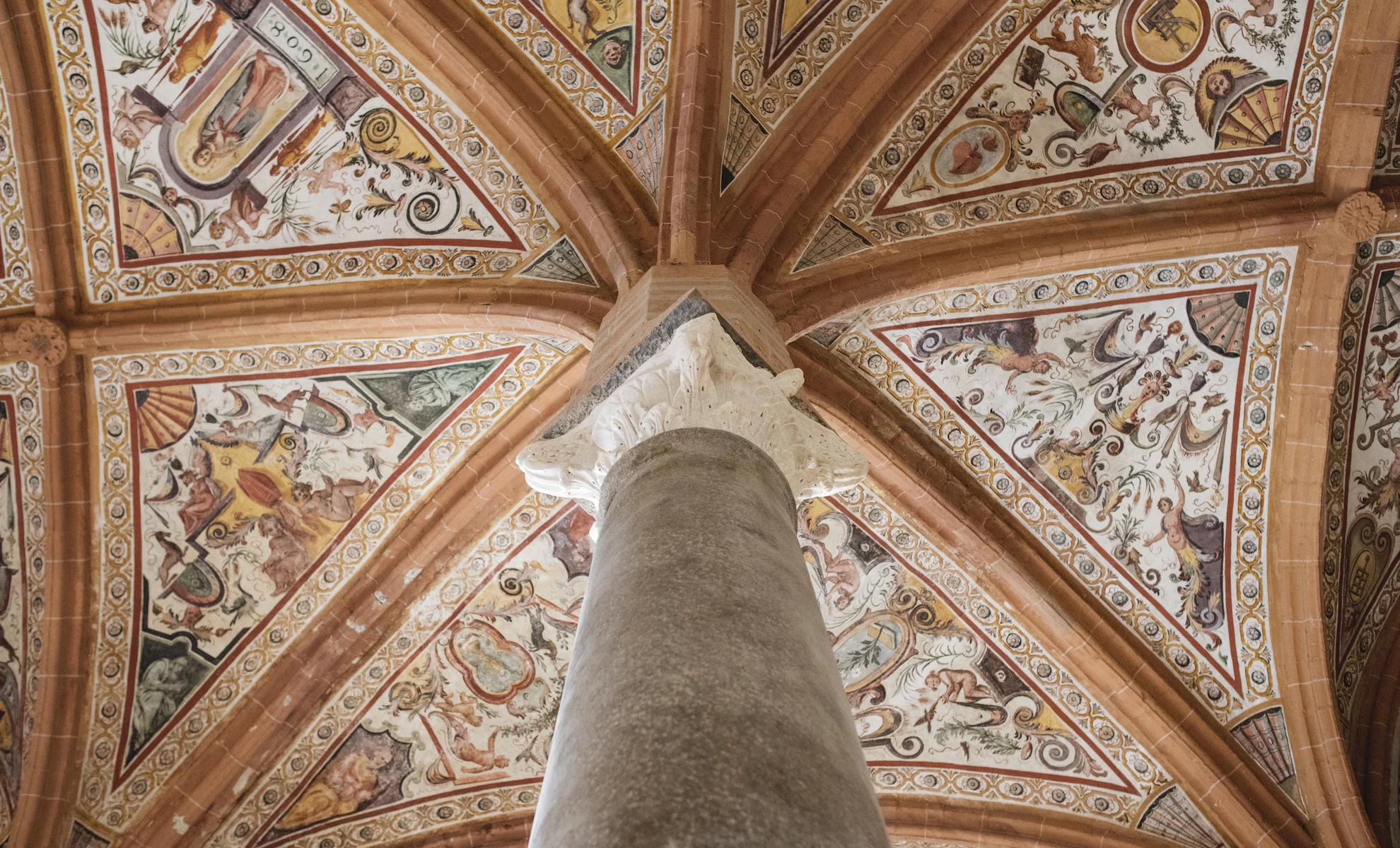What do Petrarch, Boccaccio and the Neapolitan nobility have in common? You don't need to travel a lot with your imagination, you just have to retrace the stays of the two Tuscan writers in Naples.
“Attacked by the fear of imminent death, I went out into the cloister of the monastery, where I live"Francesco Petrarca
The cloister of San Lorenzo | Ph. Anna Monaco

In his letters Petrarch remembers in this way a tragic fact of which he was witness: the tsunami that devastated the city on 25 November 1343. The monastery, to which he refers, is one of the most important in Naples and is located in the heart of the historic center. In the church of this complex a few years earlier Boccaccio met the gaze of his beloved, Fiammetta. In the same convent the city's elected officials, chosen from among the nobles of the Neapolitan seats, held their assemblie.
“Although they may have more magnificent places for their celebrity, those of the government do not want to go away from San Lorenzo, nor do they worry about the poverty of those factories, since they preserve the ancient grandeur of San Lorenzo”Giulio Cesare Capaccio - “Il Forastiero”
San Lorenzo Maggiore is the place that unites them. A Franciscan foundation of the '200, crossed by history on several levels, including the underground one where there are traces of daily life in the times of Neapolis. It is mainly in two rooms, however, that we can feel life in the shadow of the cloister: the refectory, today Sisto V room, and the chapter house.
The latter takes its name from the “chapter of the rule”, which was read in the presence of the monks gathered in assembly: here theological and inherent issues related to the management of the convent were addressed. For this reason, in the chapter rooms there are almost always images that remember the great spiritual references of the order, from the founder to the most important members. There are also representations of Virtues and Vices, a warning for the friars on the way of life to be kept.
Ph. Anna Monaco

In the case of San Lorenzo, the minor monks had before them a huge genealogical tree of the Franciscan family, a fresco from the early 1600s attributed to Luigi Rodriguez, a painter from Messina who also decorated the nearby refectory. Along the walls there are portraits of popes, cardinals, friars and nuns of the order. The grotesques, typical decorations full of small figures and vegetation, inspired by the ancient, fill the vaults.
The more careful look captures the detail of the date: 1608, placed right under the image of the Immaculate Conception, to which the Franciscans are very close.
Ph. Anna Monaco

Two four-light windows, which recall the medieval past of the chapter and of the whole convent, give light to these rooms. On the wall between the two windows, just above the door, there is a fresco which is another piece of the history of this place. On the left there is a king, with scepter and crown, in the middle a big church and on the right two monks as they give a signal of thanks to the sovereign. It was Charles of Anjou who assigned the church of San Lorenzo to the Franciscans.
Sisto V room | Ph. Anna Monaco

Politics and spirituality have always coexisted in this place: the sessions of the Kingdom parliament were held in the refectory; in the same room where the heirs of St. Francis discussed religion, the nobles of Naples made important decisions for the city. Under the attentive gaze of popes, cardinals and saints.

